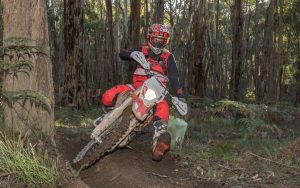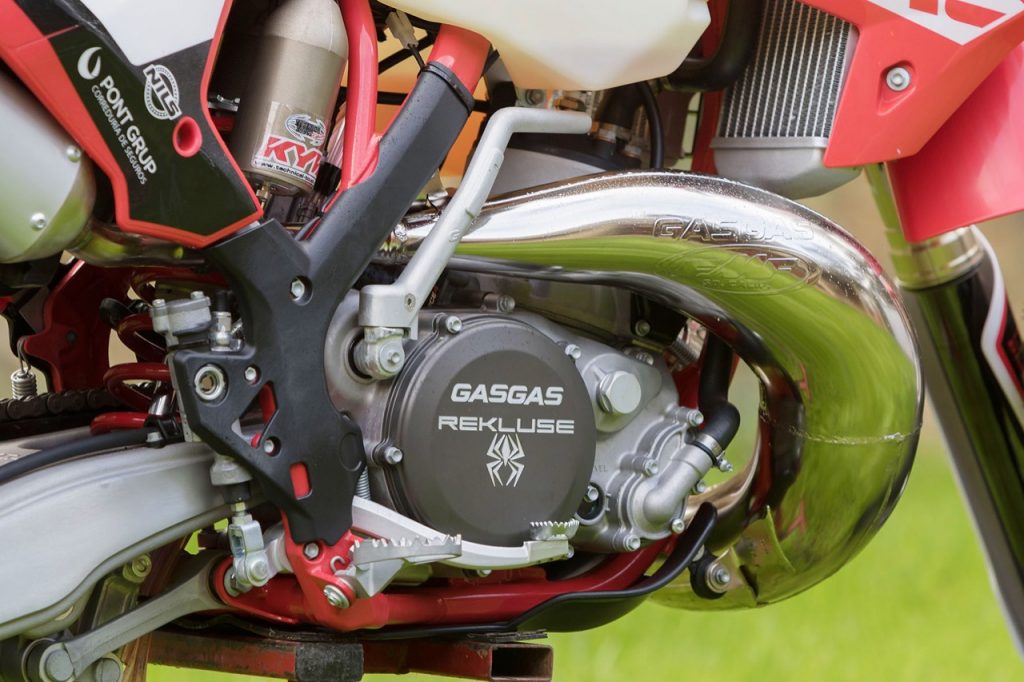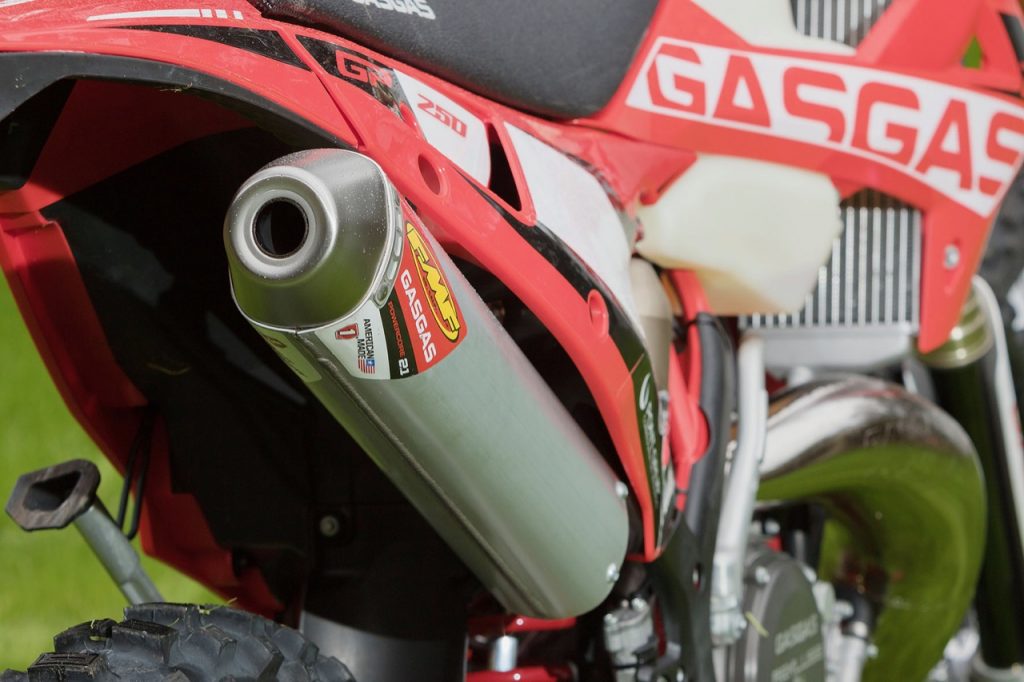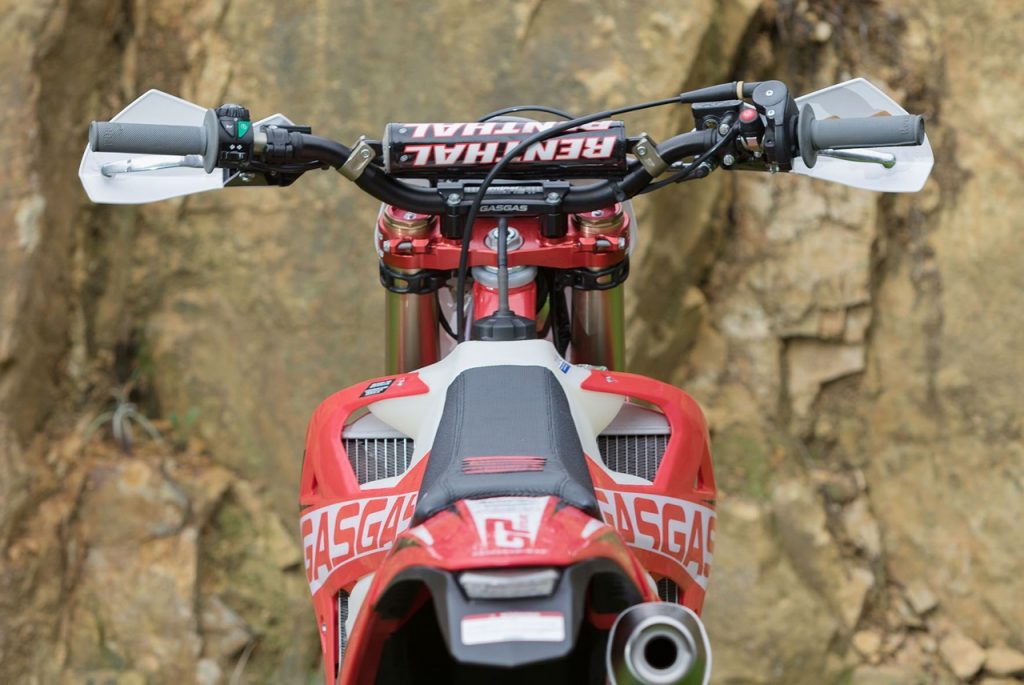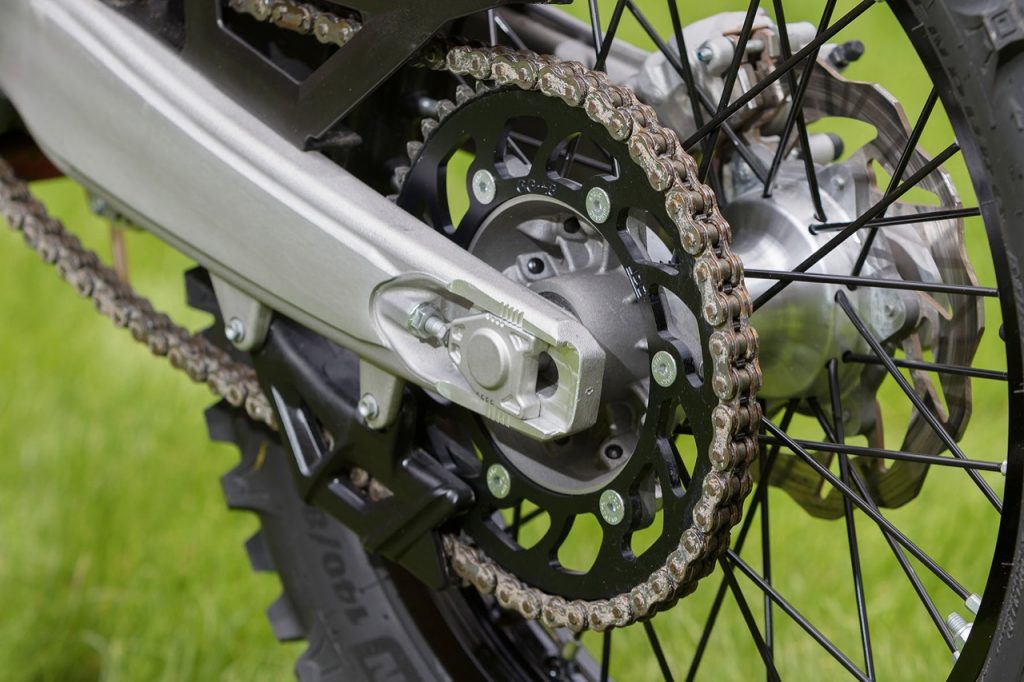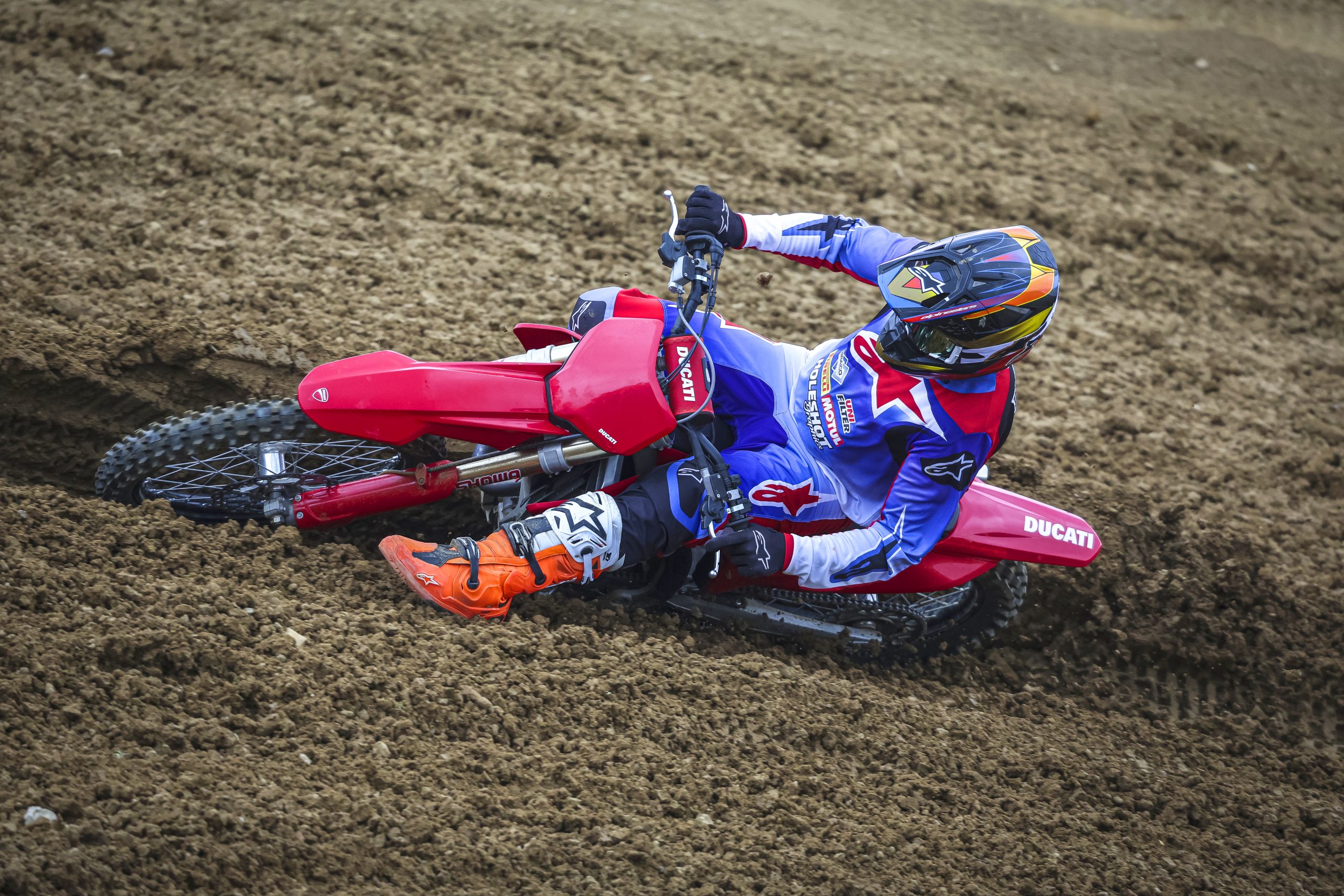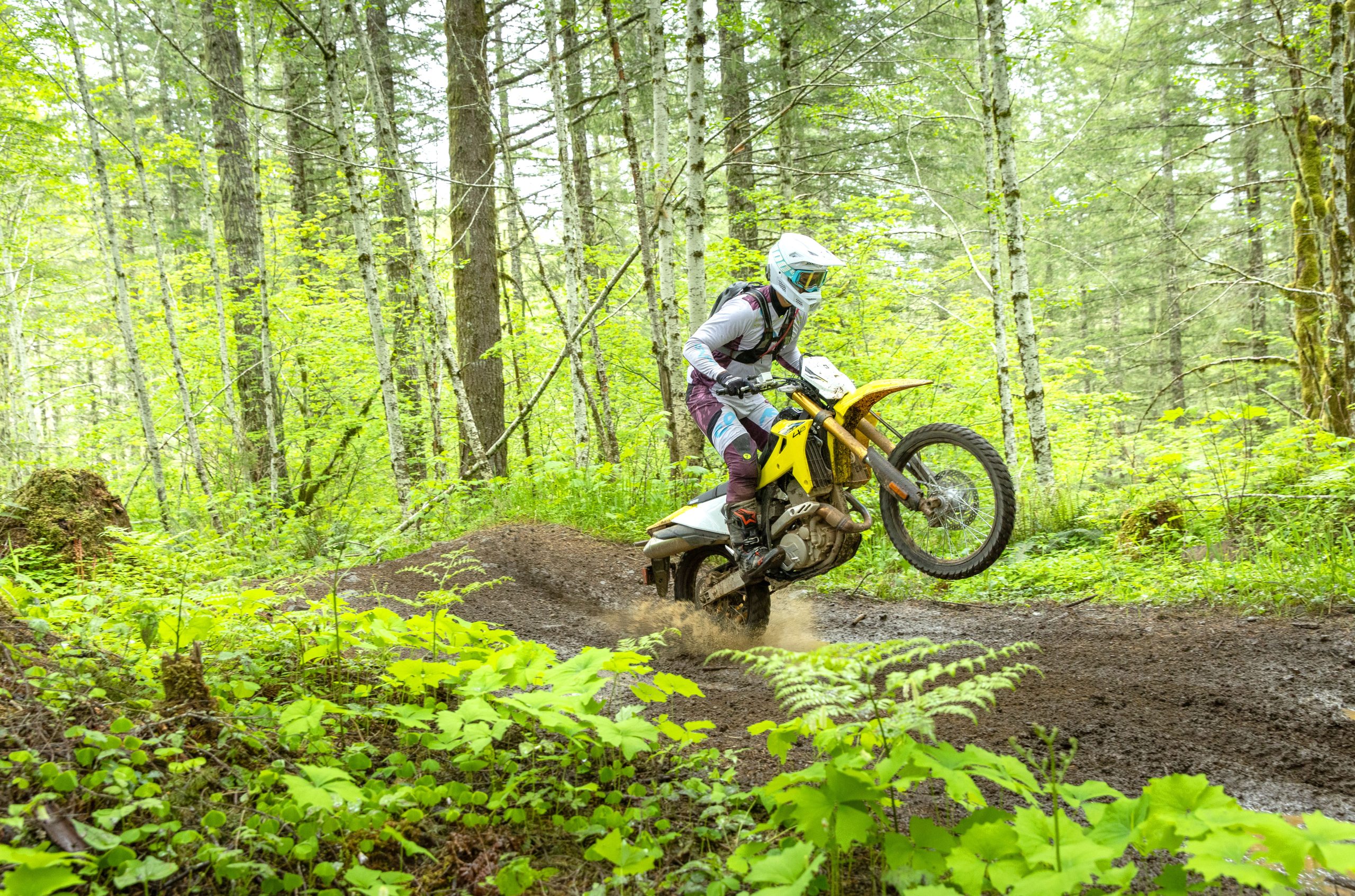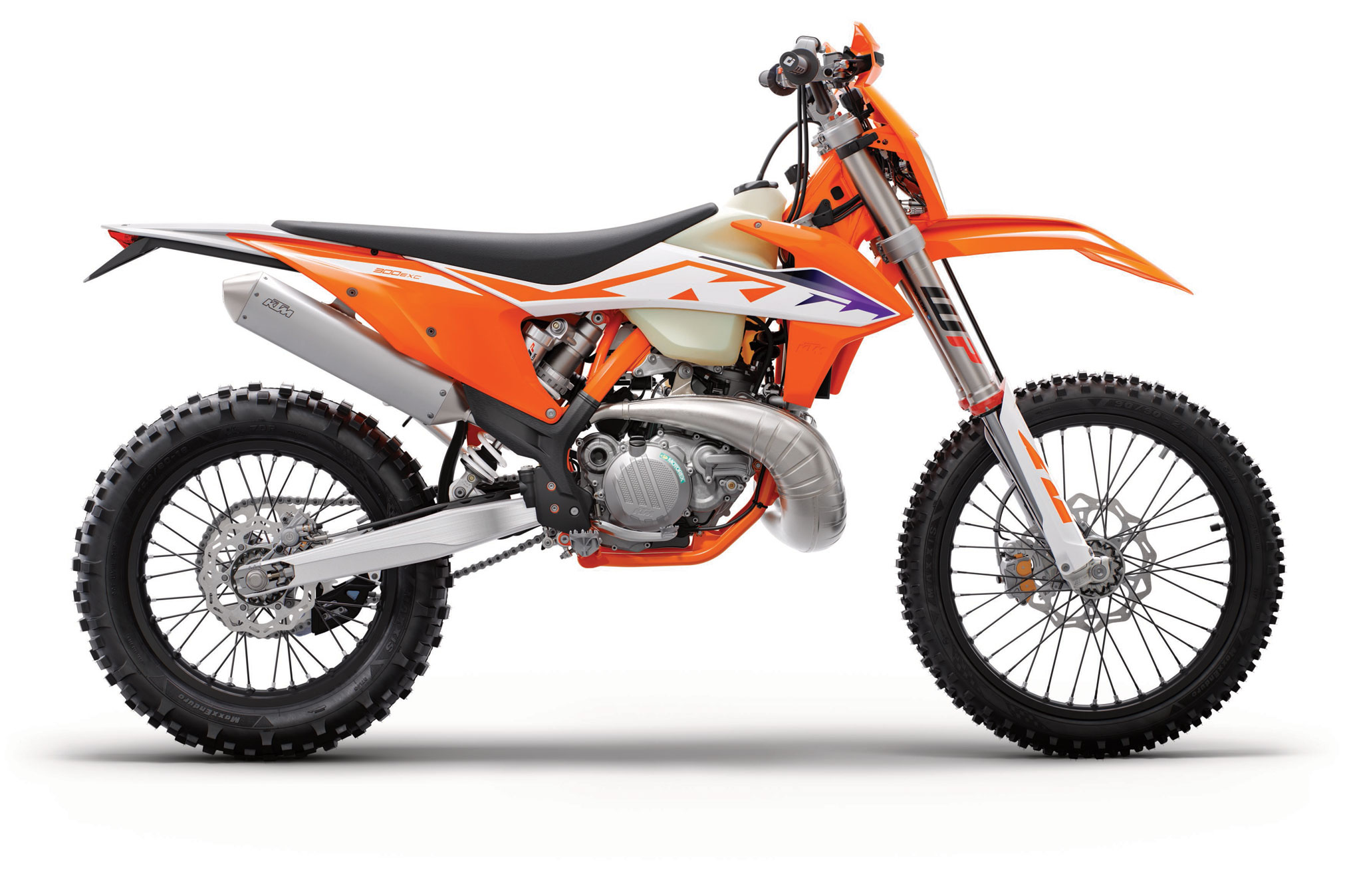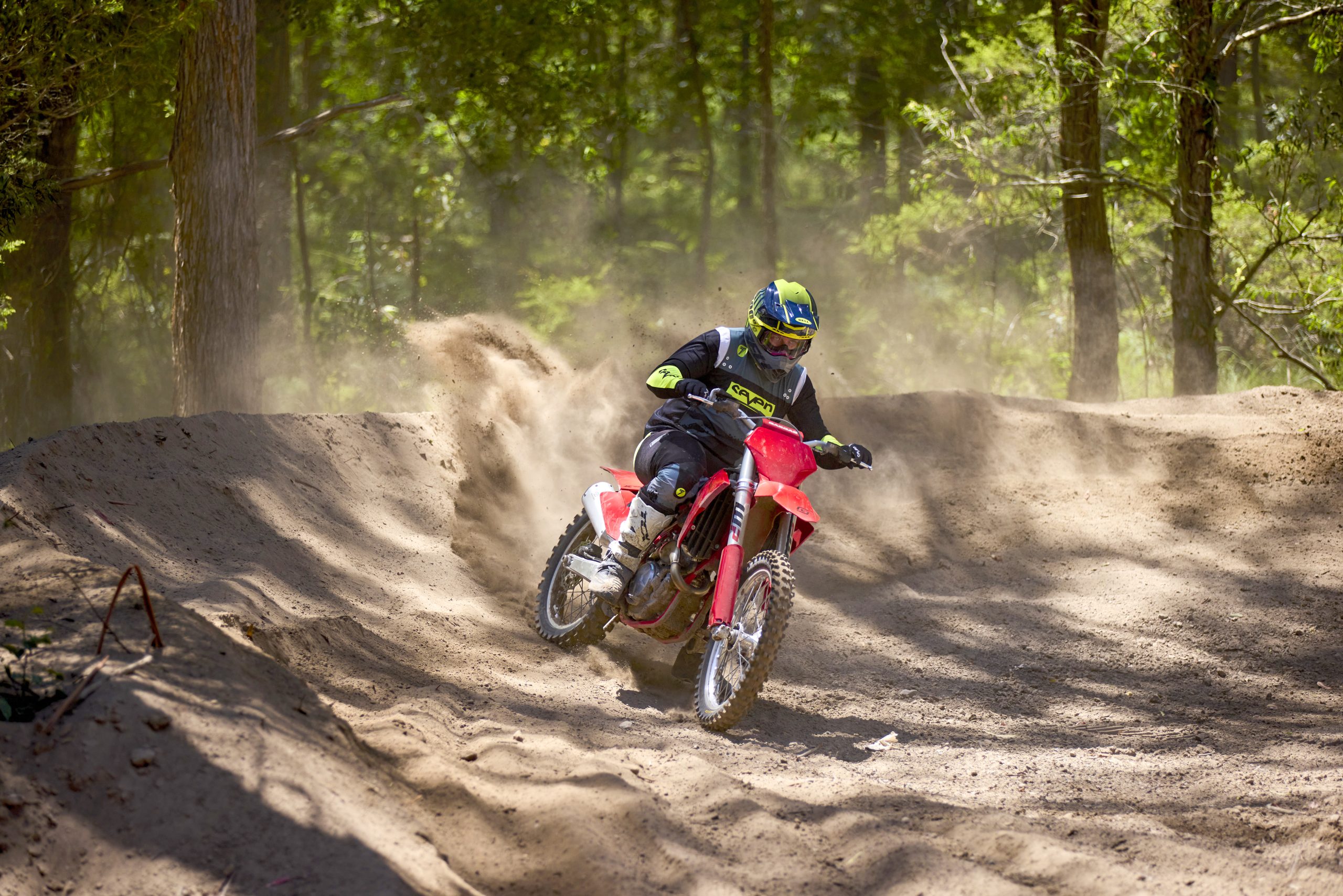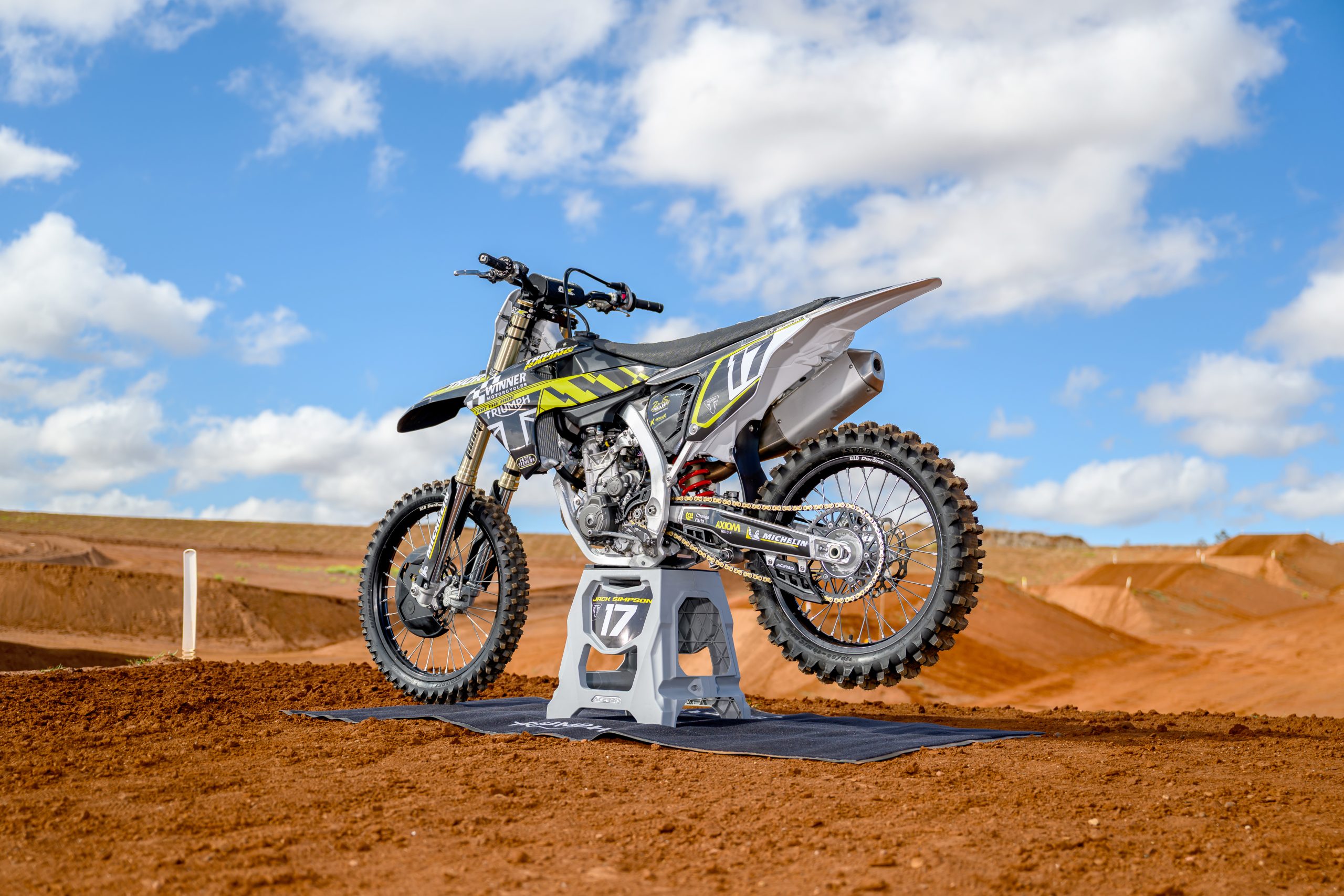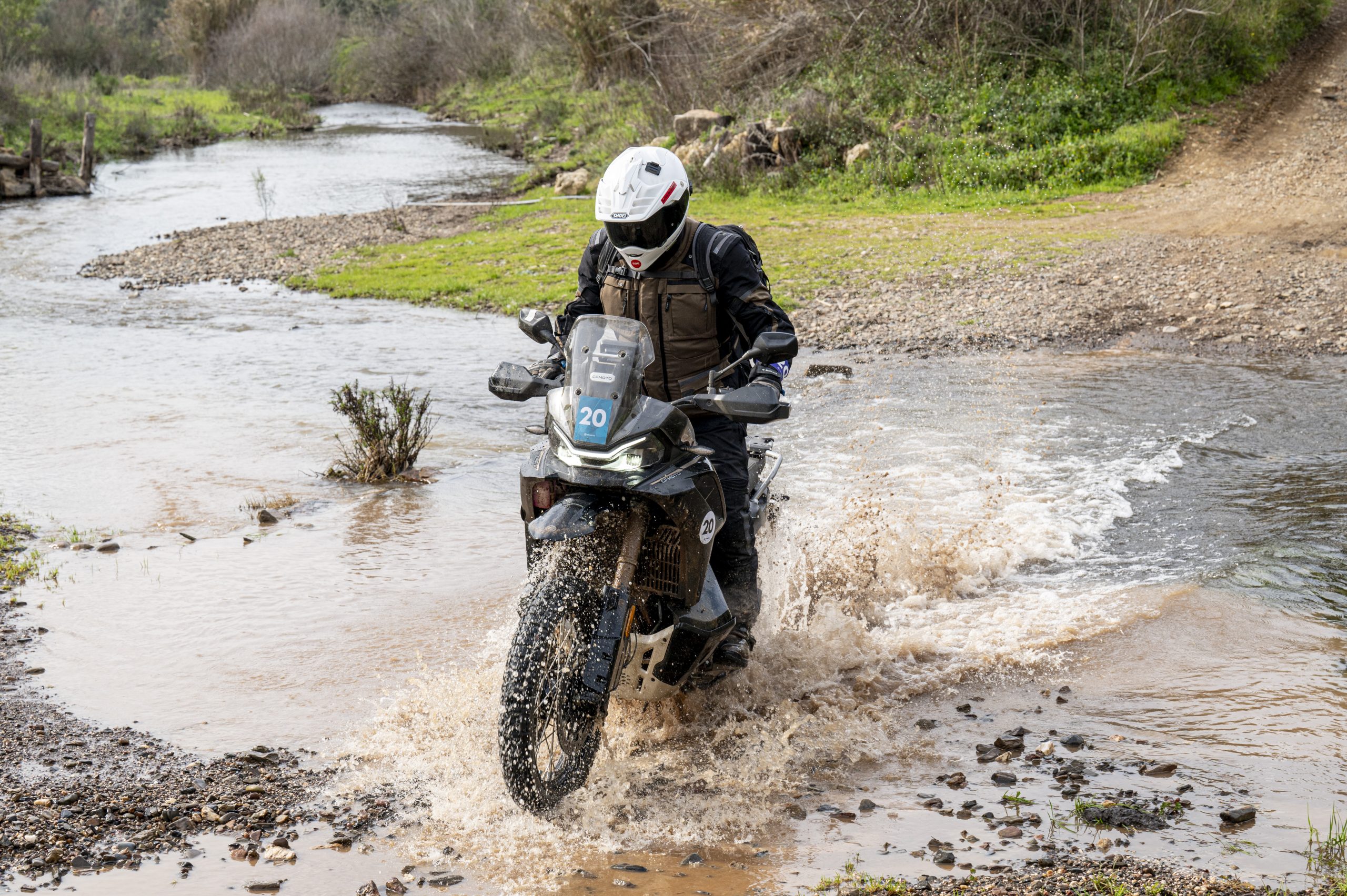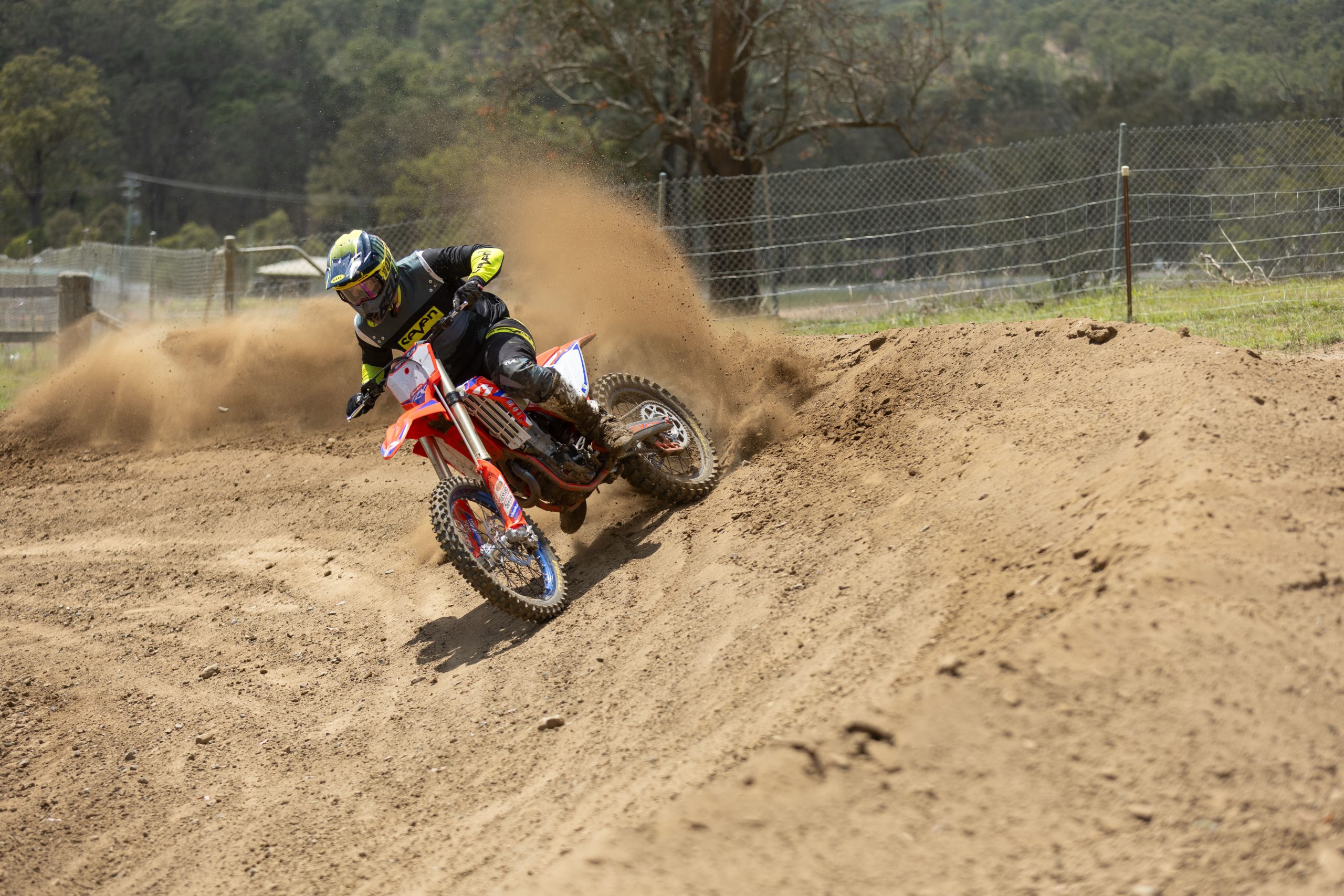THIS FEATURE WAS FIRST PUBLISHED IN ADB ISSUE #470 – NOVEMBER 2018
WORDS: Olly Malone
PIX: Kane O’Rourke
I’m a sucker for special editions. It could be a special edition Four ’n’ Twenty pie with 40% less fat and I’d buy it. Even my Holden Bogandore ute was a ‘Storm’ edition. All it had was a chrome exhaust tip but I had to have it!
It’s the same with dirtbikes. Ever since I started riding all I ever wanted was a Gas Gas Nambotin edition. Based on the bike ridden by then factory rider Christophe Nambotin, it was the trickest bike going around, in my eyes anyway.
One of my first dirtbikes was a Gasser and although I had my heart set on a Nambo I’d only worked enough hours at Woolies to afford an EC200 so it had to do – still, it had Ohlins. Over a decade has passed since the days when I’d spend hours online ogling the Nambo and Gasser has come up with a new special edition that will no doubt convert more than a few KTM Six-Days owners. It’s called the Enduro GP.
We caught our first glimpse of the Enduro GP early last year. In fact, we saw the Enduro GP before we knew anything about the 2018 Gas Gas range.
At the time it was being ridden by Gas Gas factory rider Jonathan Barragán in the World Enduro Championship and it was the bike on which Gas Gas based its production Enduro GP model. What separates the Enduro GP from the EC range is a long list of performance mods and a few nice “bling” components.
TALKING BLING
Starting with what I think is the most important thing, the Enduro GP features a different cylinder head to the EC. The new one is designed to increase torque and, after riding the GP250 and EC250 back-to-back, this isn’t just marketing hype, but more on that later.
It’s assisted by a full FMF exhaust system (EC has FMF muffler), which is Gas Gas branded but looks a lot like the popular FMF Gnarly. Less noticeable but still important is the Rekluse clutch cover and housing that Gasser says “increases efficiency and cooling”.
The handlebar is Renthal’s top-notch 997 Twin-Wall feels rock solid compared to the standard 7/8-incher. The 48mm KYB closed cartridge fork has been given a DLC coating that allows the fork to slide through the stroke with less friction, while X-Trig machined, red anodized triple-clamps and CNC-machined handlebar clamps complete the front-end modifications.
The front disc is floating and the axle has a handle for quick tyre changes during races. Black spokes, a black anodised aluminium sprocket, Enduro GP plastics and graphics and Enduro GP-themed gripper seatcover complete the modifications.
For all of the above you pay $1200 on top of the standard EC, which makes the GP250 $12,990 and the GP300 $13,490. To put that into perspective, that’s $1005 less than the fuel-injected Husqvarna TE250i and $1805 less than the TE300i. If you’re looking at a KTM, it’s $1805 less than the 250 EXC TPI Six-Days and $2505 less than the 300 EXC TPI Six-Days. But those savings mean nothing if the bike doesn’t perform well, lucky for Gas Gas they can walk the walk.
Victoria’s Wombat State Forest was the site of the exclusive press launch for the GP250 where ADB and a New Zealand journo were the first media in Australasia to ride the new model. When I first saw the Enduro GP I had to do a double take as it’s harder to pick from an EC than the Gas Gas Six Days yet its performance enhancements are far greater.
Sitting on the GP before even starting the engine it feels race ready with its Renthal handlebar, red triple-clamps and super-grippy seat. The choke lever has gone from the handlebar, an usual feature which remains on the EC and XC, and on the GP it’s mounted on the Keihin PWK38 carby, as God intended.
The GP still has a few quirks, most noticeable is the side-mounted starter motor which is a little old-fashioned, but we guess it’s something Gasser will address when it re-engineers the crankcase. The set-up worked perfectly during our test and the GP has a kickstarter for all you nervous types who don’t trust the magic button.
Sharper response
Fire the 249.3cc engine into life and it dings away at idle no different to its EC brother as they share the same FMF PowerCore 2.1 muffler. Blip the throttle and there’s a sharper response from the engine, a hint the new cylinder head and combustion chamber are not just for show.
Engage the clutch, which has a slightly heavier but more consistent action than the standard EC one, pull away and crack open the throttle and the GP surges forward.
The torque from the 250 is not as strong at low revs as from the 300 but what it lacks in torque it makes up for in mid-to-top-end. The GP250 has a meaty mid-range and potent top-end that reminds you you’re riding a two-stroke. You can thank the new cylinder head for that. It’s not ‘300 smooth’; there is a noticeable kick from mid-range to top-end which two-stroke fans will like.
The engine picks up revs so quickly, quicker than a 300 due to the lighter piston, and throttle response is precise. Because the 250 is slightly down on torque versus the 300 your gear selection needs to be more accurate. It’s nothing like a 125 or 200 but you can’t be as lazy as you can on a 300.
The suspension settings are the same, except for the DLC, but after riding the GP and EC back-to-back they feel completely different. The fork and shock are more plush and travel through the stroke more smoothly than the standard KYB gear on the EC.
DLC TREATMENT
The ride over small bumps and low-speed trail junk is smoother and feels like you don’t have to do as much with the ’bar to keep tracking straight. However, up the ante and, at high-speed, the fork feels as though it sits in a better part of the stroke that works well on fast sections of trail so, even though you have slow-speed plushness, it doesn’t hurt hi-speed handling.
You can thank the DLC for that as it allows the fork to move through the stroke with less friction from the seals, the difference is noticeable. This made the GP250 more predictable and I felt like I always knew what it was going to do, even when tree roots would catch me off guard as the sun dipped behind the mountains in Wombat, the reaction from the bike was very predictable.
In terms of ergonomics, the GP is comfortable to ride, more comfortable than the EC for someone of my height. The bend of the 997 Renthal is less raked than the EC handlebar and that opens up the cockpit. Even though the 997 bend is no taller it still makes standing a lot more comfortable and didn’t destroy my back.
If you’re the type of person to buy a bike only to modify it straight away, the Gas Gas Enduro GP is something worth considering. If we’re talking only dollars and cents it makes a lot of sense to pay the extra cash at the time of purchase. Not only is it another level compared to the EC250 in terms of handling and power, to buy all the parts on the GP individually would cost significantly more than what Gasser is asking for the GP on top of the EC. For that, the GP is a great buy and it has the performance to match.
